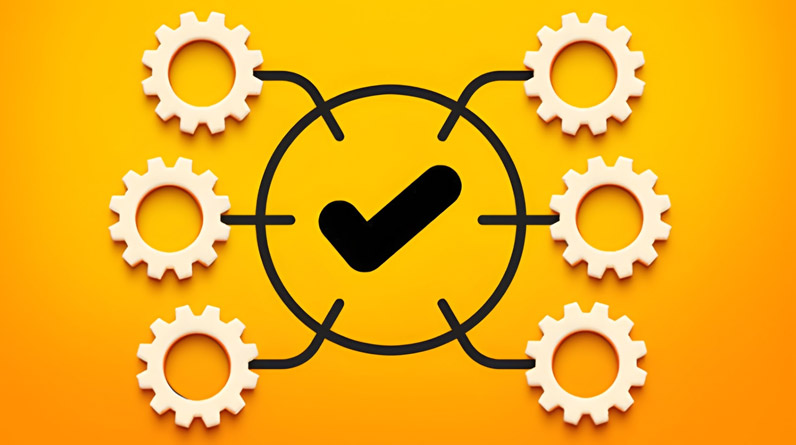Financial success isn’t reserved for high earners or investment gurus. The truth is, most people who achieve financial stability do so through consistent, intelligent habits rather than sudden windfalls or complex strategies. Whether you’re struggling to make ends meet or simply want to optimize your financial position, developing smart money habits can transform your relationship with money and set you on a path toward lasting financial wellness.
The difference between financial stress and financial freedom often comes down to daily decisions. Small changes in how you handle money compound over time, creating significant results. This guide explores seven transformative money habits that can help you take control of your finances, reduce stress, and build the financial future you deserve.
Understanding the Psychology Behind Money Management
Before diving into specific habits, it’s important to understand why money management feels challenging for so many people. Our brains are wired for immediate gratification, making it difficult to prioritize future benefits over present desires. According to behavioral economics research, the average person values immediate rewards approximately 2.5 times more than future rewards of equal value.
This psychological bias explains why saving feels harder than spending, and why building wealth requires intentional habit formation rather than relying on willpower alone. The good news? Once positive financial behaviors become habits, they require less mental energy to maintain.
1. Master the Art of Intentional Spending Tracking
Most people underestimate their spending by 20-30%. This awareness gap is the silent killer of financial goals. You cannot improve what you don’t measure, making spending awareness the cornerstone of financial health.
Why Traditional Budgets Often Fail
Many people create strict budgets that restrict spending too dramatically, similar to crash diets that inevitably fail. Instead of rigid budgets, focus on spending consciousness. The goal isn’t to eliminate all discretionary spending—it’s to ensure every dollar serves a purpose you’ve consciously chosen.
Implementation Strategy
- Week 1: Simply observe and record every expense without judgment
- Week 2: Categorize your spending into needs, wants, and waste
- Week 3: Identify your top three spending leaks
- Week 4: Create targeted strategies to reduce waste categories by 25%
Example: Sarah discovered she spent $340 monthly on food delivery services. Rather than eliminating this entirely, she reduced it to twice weekly (saving $170/month) and used the savings to fund her emergency account. Within six months, she had saved over $1,000 without feeling deprived.
2. Build a Values-Based Budget Framework
Instead of the restrictive budgets that focus on what you can’t have, create a values-based spending plan that aligns your money with your life priorities. This approach is more sustainable because it’s rooted in personal meaning rather than arbitrary restrictions.
The 50-30-20 Framework as a Starting Point
| Category | Percentage | Purpose | Examples |
|---|---|---|---|
| Needs | 50% | Essential living expenses | Rent, utilities, groceries, insurance, minimum debt payments |
| Wants | 30% | Lifestyle and discretionary spending | Entertainment, dining out, hobbies, subscriptions |
| Savings & Debt | 20% | Future security and debt elimination | Emergency fund, retirement, extra debt payments, investments |
This framework provides structure while allowing flexibility. If your needs exceed 50%, that’s a signal to either increase income or find creative ways to reduce fixed expenses.
Customizing Your Budget
Your budget should reflect your values. If travel matters more to you than a new car, allocate accordingly. If building wealth is a priority, consider shifting to a 50-20-30 split, increasing savings to 30% while reducing wants to 20%.
3. Automate Your Financial Success

Automation removes decision fatigue from your financial life. When money moves automatically toward your goals, you eliminate the daily temptation to spend it elsewhere.
The Power of “Paying Yourself First”
Traditional advice suggests saving what’s left after expenses. Financially successful people flip this equation: they save first, then spend what remains. This single shift can increase your savings rate by 40% or more.
Automation Checklist
- Bill payments: Set up automatic payments for all fixed expenses to avoid late fees and credit score damage
- Savings transfers: Schedule automatic transfers to savings accounts on payday
- Retirement contributions: Maximize employer 401(k) matching before anything else
- Debt payments: Automate extra principal payments on high-interest debt
- Investment contributions: Set up recurring investments for long-term wealth building
Example: Marcus automated a $200 biweekly transfer to his high-yield savings account, timed to occur the day after his paycheck deposits. In one year, he accumulated $5,200 without feeling the impact on his daily spending—because the money “disappeared” before he could spend it.
4. Strategic Debt Management: The Hybrid Approach
Not all debt is created equal, and the most effective debt payoff strategy combines psychological wins with mathematical efficiency.
Understanding Debt Types
| Debt Type | Typical Interest Rate | Priority Level |
|---|---|---|
| Credit Cards | 16-24% | Highest |
| Personal Loans | 8-15% | High |
| Auto Loans | 4-7% | Medium |
| Student Loans | 3-6% | Medium-Low |
| Mortgage | 3-7% | Low |
The Hybrid Payoff Method
Start with the smallest high-interest debt (above 8%) to gain momentum, then shift to targeting the highest interest rates. This approach provides early psychological wins while minimizing long-term interest costs.
- List all debts with balances and interest rates
- Pay minimums on everything
- Attack the smallest debt over 8% interest first
- Once that’s paid, redirect that payment to the highest interest rate debt
- Repeat until debt-free
This method eliminates the weakness of pure snowball (ignoring interest costs) and pure avalanche (lacking motivational wins) approaches.
5. Build a Multi-Layered Safety Net
Financial emergencies happen to everyone. The difference between a minor inconvenience and a financial catastrophe is often whether you have adequate reserves.
The Three-Tier Emergency Fund
Tier 1: Immediate Access ($1,000)
Keep this in a checking or instant-access savings account. This covers small emergencies like car repairs or medical copays without derailing your budget.
Tier 2: Standard Emergency Fund (3-6 Months Expenses)
This should be in a high-yield savings account, earning 4-5% annual interest while remaining accessible. Calculate your true monthly expenses (not income) and multiply by your chosen number of months.
Tier 3: Extended Reserves (6-12 Months for Self-Employed)
If you have variable income, are self-employed, or work in a volatile industry, aim for the higher end. This provides genuine peace of mind and negotiating power in your career.
Smart Saving Strategies
- Direct all windfalls (tax refunds, bonuses, gifts) to your emergency fund until it’s fully funded
- Set up “round-up” features that automatically save spare change from purchases
- Use high-yield savings accounts that earn 10-15x more than traditional savings accounts
- Treat your emergency fund contribution as a non-negotiable bill
6. Eliminate Financial Friction and Waste
Small recurring expenses are the termites of personal finances—individually insignificant but collectively devastating. The average American wastes $348 monthly on forgotten subscriptions and unused services.
The Quarterly Financial Audit
Schedule a recurring calendar event every three months to review all recurring charges:
- Streaming services (video, music, gaming)
- Subscription boxes
- Gym memberships
- Software subscriptions
- Insurance policies
- Phone and internet plans
For each subscription, ask: “Would I sign up for this today at this price?” If not, cancel it.
The One-In-One-Out Rule
Before adding any new recurring expense, eliminate an existing one of equal or greater value. This prevents subscription creep and forces you to prioritize what truly matters.
Example: Jennifer’s quarterly audit revealed $83 in monthly subscriptions she rarely used. Canceling just three services freed up $996 annually—enough for a vacation she actually valued.
7. Invest in Your Financial Education
The best investment you can make is in your own financial literacy. Understanding money isn’t innate—it’s a learned skill that pays dividends throughout your life.
Strategic Learning Approach
Month 1-2: Foundation
Focus on budgeting, debt management, and emergency savings. Master these basics before moving to advanced topics.
Month 3-4: Credit Mastery
Learn how credit scores work, how to build excellent credit, and how to leverage credit responsibly for your benefit.
Month 5-6: Investment Basics
Understand retirement accounts (401k, IRA, Roth IRA), index funds, and the power of compound interest.
Month 7+: Advanced Topics
Explore tax optimization, real estate investing, side income development, and wealth building strategies.
Free Resources to Start Today
- Personal finance podcasts during your commute
- Library books on money management
- Financial literacy courses from community colleges
- Free budgeting and tracking apps
- Credit monitoring tools to understand your credit health
Dedicate just 30 minutes weekly to financial education. Over a year, those 26 hours of learning can increase your lifetime earnings by six figures through better decisions.
Implementing Your Financial Transformation
Don’t try to implement all seven habits simultaneously. Research shows that habit stacking—adding one new habit at a time—produces more sustainable results than dramatic overhauls.
Your 90-Day Implementation Plan
Days 1-30: Start spending tracking and establish one automated savings transfer
Days 31-60: Create your values-based budget and set up automated bill payments
Days 61-90: Begin strategic debt payoff and build your first $1,000 emergency fund
After 90 days, the remaining habits will integrate more naturally because you’ve built the foundation and momentum.
Conclusion: Small Habits, Significant Transformation
Financial success isn’t about earning more—it’s about managing wisely what you already have. These seven smart money habits provide a roadmap from financial stress to financial confidence.
Remember that progress isn’t linear. You’ll have setbacks and months where emergency expenses derail your plans. What matters is the overall trajectory, not perfection in any single month.
Start with one habit today. Track your spending for the next seven days. Automate one savings transfer. Cancel one unused subscription. These small actions, repeated consistently, create the financial life you want.
Your financial future is built one decision at a time. The question isn’t whether you can afford to develop these habits—it’s whether you can afford not to.
Take action now: Choose one habit from this article to implement this week. Your future self will thank you for the decision you make today.


